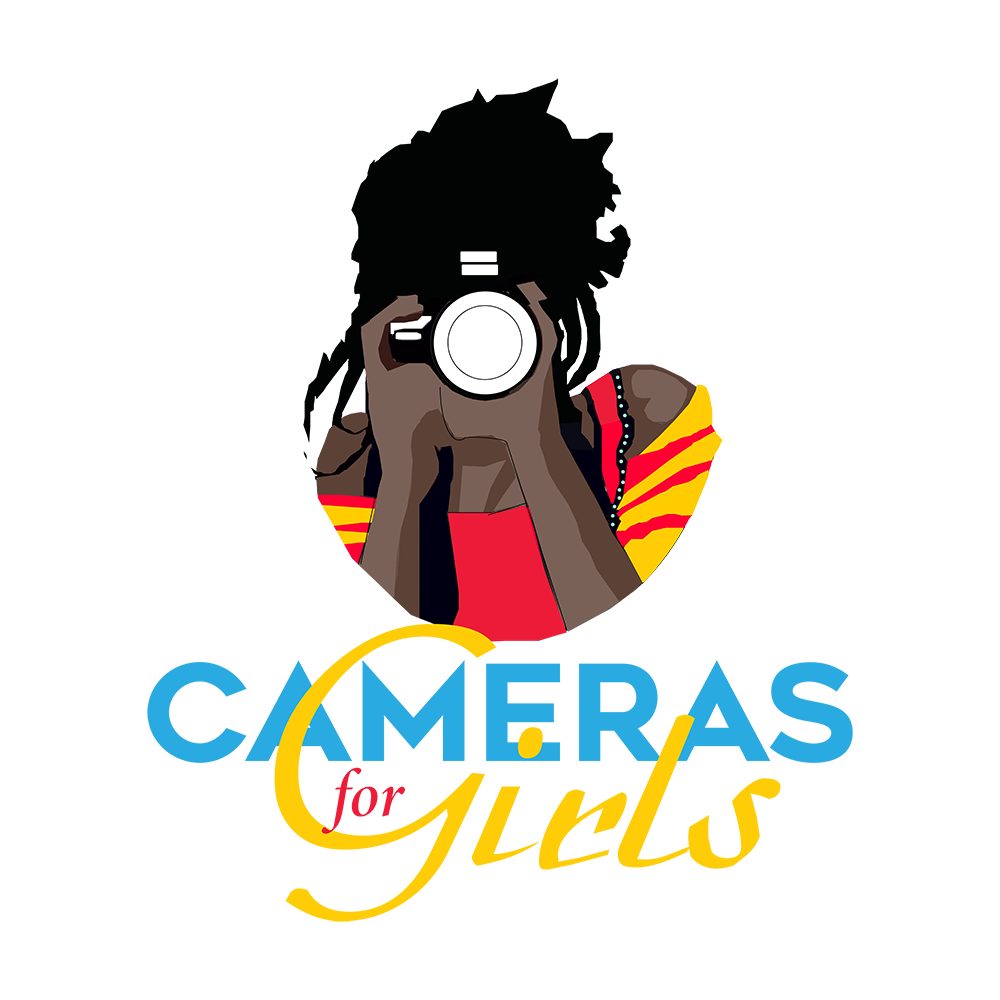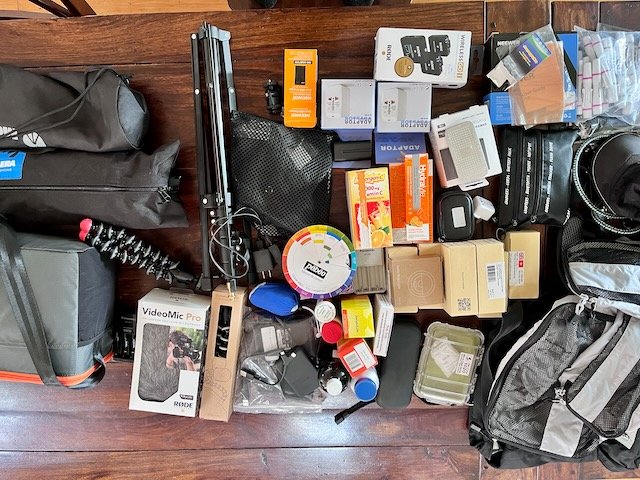Update On Our Upcoming 4th Cameras For Girls Uganda Workshop
There are two weeks left until my board member Cristina Sacco and I leave Canada headed for Uganda to run the 4th Cameras For Girls in-person workshop. This workshop will train 16 young women who seek to overcome gender-based barriers in finding paid work in the journalism and communications industries.
We are thrilled to say, "Uganda, here we come again!"
Cameras For Girls students from the 2022 Workshop in Kampala, Uganda
Planning and Preparation
So much work goes on behind the scenes, such as working with Makerere University and Uganda Christian University to recruit students. They help us by sharing our in-depth application, which requires the students to explain by essay, why they think the Cameras For Girls training will help them succeed with their career goals. We also look at other vital stats to help us narrow down the applications. We received over 50 applications this year, and I wish we could take them all, but the lack of funding currently prevents that from happening.
Once I receive the applications, I work with trusted advisors to help finalize the list. The workshop, including the cameras, rental of the facilities, food costs, transportation, etc., costs approximately $10 -$15,000 to run for one year. Aside from the 4-day workshop, the students also get access to the robust online training platform, weekly Zoom calls, resume review, Linkedin preparation course, and mentoring.
While I am working on recruitment, we are also hard at work trying to source the cameras – after the pandemic, this has become a nuisance. I have Brian from Brian's Camera Shop in Newmarket to help me. With two weeks to go, my stress is a bit high because we don't yet have all the cameras, but I am sure we will get them in time – or at least I am betting my life on it!
Then there's the packing. This time I will be going to Uganda for six weeks. Two organizations have contracted me to support them by documenting their work in Uganda. So, you can imagine there's lots for me to pack.
Packing for Uganda's 4th Cameras For Girls workshop
What Happens During the 4 Day Workshop
The workshop is where the magic happens, and the girls and I get to know one another. I start with an ice-breaker asking the girls to tell me one thing that makes them happy – we go around in a circle holding hands, which quickly gets them comfortable with me and the other students in the cohort. After all, we will be together for the year.
On day 1, I teach them how to hold the camera properly and what all the dials and buttons do. Some girls have never touched a camera before coming to the Cameras For Girls workshop. I then cover the exposure triangle and focus extensively on aperture, shutter speed, and ISO, so they really start to understand exposure. We also cover depth of field and sensor size so they can begin to understand some of the technical aspects of photography. Finally, we spend considerable time on composition, otherwise known as the rule of thirds.
Most beginners and I was guilty of this, think that you should always have the subject of your photography in the middle. We cover the ins and outs of composition and discuss how composition can make or break a photo.
After a sit-down lunch supplied by Cameras For Girls, we do an hour-long photo walk where the girls get out and practice with their gifted cameras. They are tasked on day 1 with taking photos in aperture priority. This exercise slowly starts teaching them the different aspects of the exposure triangle by practicing one part at a time.
We spend the rest of the day reviewing the students' photos as a class. Constructive critique helps the class learn from each other and see how to improve.
Day 2 gets off to a great start as we do another review of the exposure triangle. I go around the room and quiz the students on what they remember. They get a prize from me for reiterating the teachings, which makes it fun for all.
We then cover 4 common mistakes in composition, 6 ways to tell a story using photography, and finally, creative photography (framing, leading lines, etc.).
After our sit-down lunch, we do another practice session. This time we practice using shutter priority, and I work with a few students at a time to explain "panning," which is when you slow your shutter speed and move the camera from left to right or left to right and capture your subject in slow motion, or you raise your shutter speed to freeze them in action. Works great for sports photography or people in action.
Before we end the day, we again sit down to review everyone's images as a group so that they can learn from each other. It's a powerful exercise.
Day 3 is the last day of our in-person workshop, where the girls are learning how to use their new cameras.
On day 3, the girls learn to go entirely "manual" on their cameras. From day 1, we slowly guide them to use their exposure dial and to stay off "auto," which is a tendency for beginners. However, by doing this, there's no reason for our course as they will not learn anything about photography.
We also delve into "Ethical Photography and Informed Consent," which I harp on to anybody who will listen, especially my students. As journalists, photojournalists, documentarians, and the like, it's our responsibility to capture our world and the people we are so blessed to photograph as ethically as possible. Furthermore, they must learn this practice early to keep them safe and their subjects respected.
Ethical photography and informed consent means that you depict a subject most honestly and authentically as possible and consider their circumstances and backgrounds. For instance, when I work in refugee camps, I don't share those images widely as these people have already been harmed and subjected to intolerable human conditions. My photos should not further harm them but should change how we view the world. We must also pay attention to leaving the "colonial mindset" of the work behind and showing the true heroes of the work being done in developing countries. Informed consent means that you have explained the photos' purpose and where they will be shown. Your subject might not speak English, or you don't speak their language. Using translators, I am conscientious in explaining the work, the purpose, and where and how their images will be shown, and only then do I ask for consent. It's an early lesson to be learned that will serve these girls well as they advance in their careers.
We finish the day with guest speakers from the journalism and photography industries who live and work in the local community and a final review of their images taken during the day.
The 4th day puts all the learning together in the practical day, which happens in tandem with our NGO partner Girl Up Uganda.
During this day, the students learn the following:
How to research the organization and their beneficiaries
How to interview a subject(s)
How to put a story together with different perspectives
How to take photographs using all that they learned during the first 3 days, including composition, aperture, shutter speed, and depth of field.
Once we finish this day, they have two weeks to assemble their stories. They are tasked with writing an article (min 500 words) and embedding their photos into the article with proper captions underneath. They then turn in their first draft for review and comments. Once it is finalized, it is sent to the NGO as a thank you so they can use it in their social media, and the girls now have their first polished piece in their portfolio.
During our workshop in Uganda this year, Cristina, my board member, who is also an incredible photographer and filmmaker, will assist me by filming our work to have more behind-the-scenes videos to show our generous donors and use on our social media.
After I return to Canada
This year will be slightly different as I have two paid documentary jobs in Uganda to complete, plus the signing of the agreement between Cameras For Girls and the University of Dar es Salaam in Tanzania before returning home in late July.
Thus, our weekly online training sessions, usually held Fridays, will begin in the first week of August.
The other 3 phases in the online training encompass the following:
Weekly Zoom calls, held on Fridays, where I review photos and assignments and/or teach them something photography or journalism related.
Editing sessions with our program partner, Youth Arts Movement, at our editing lab in Uganda.
Learning how to be seen online through our monthly digital marketing training in Uganda.
Building out their resumes and Linkedin profiles.
Requirements for monthly assignments to be completed so they keep moving the needle on their skills.
Mentoring with peers from my community.
Plus, our new peer-to-peer support group, led by two former students in Uganda, supports the girls in sharing their daily wins and struggles as a woman living in Ugandan culture.
As you can see, there's a lot of preparation before, during and after to make the Cameras For Girls program successful.
I look forward to sharing updates when I return, and in the meantime, I hope you will look for our updates from the field as I share them on Instagram and Twitter.
Please make sure you are following us at https://www.instagram.com/camerasforgirls and https://www.twitter.com/camerasforgirls


